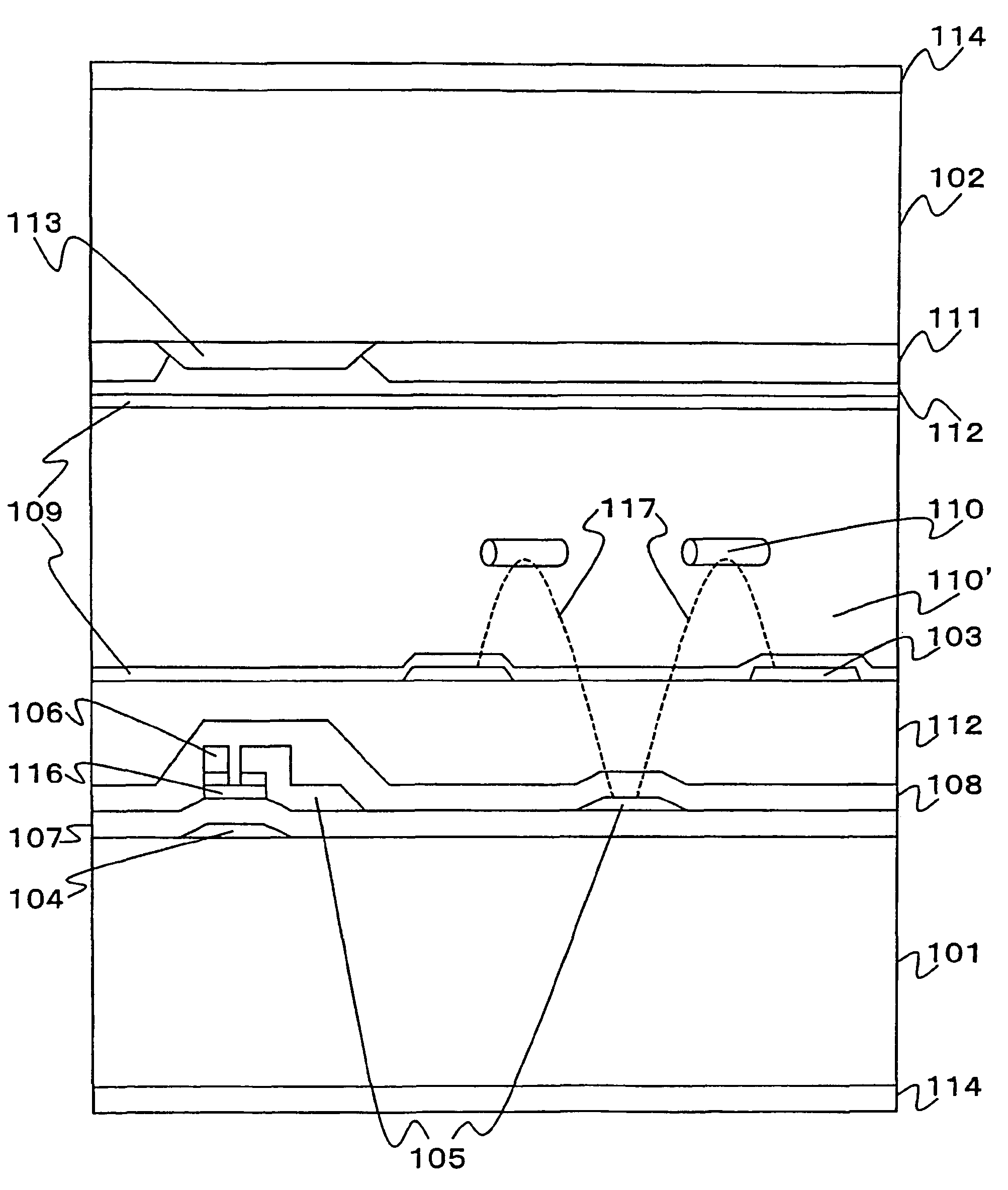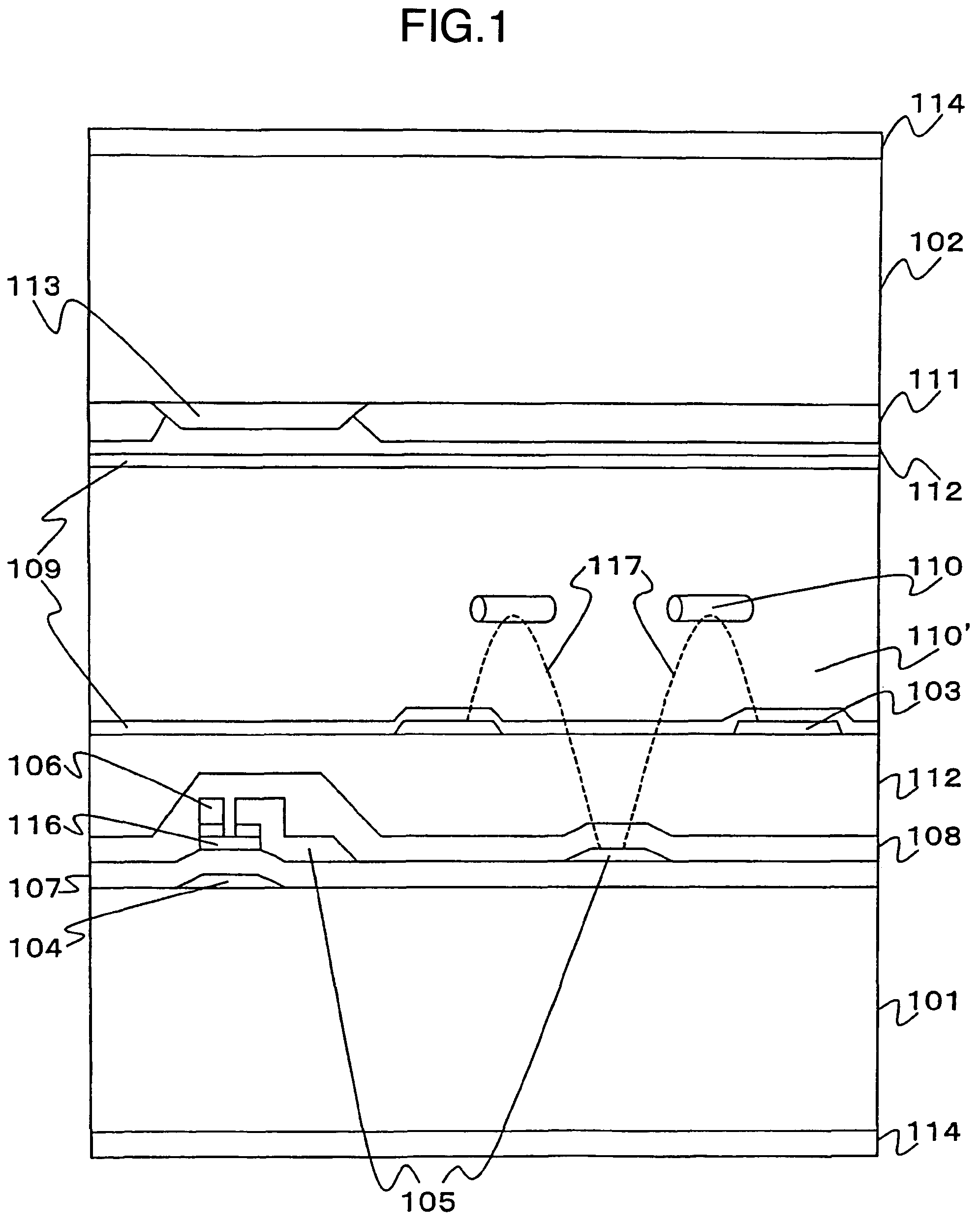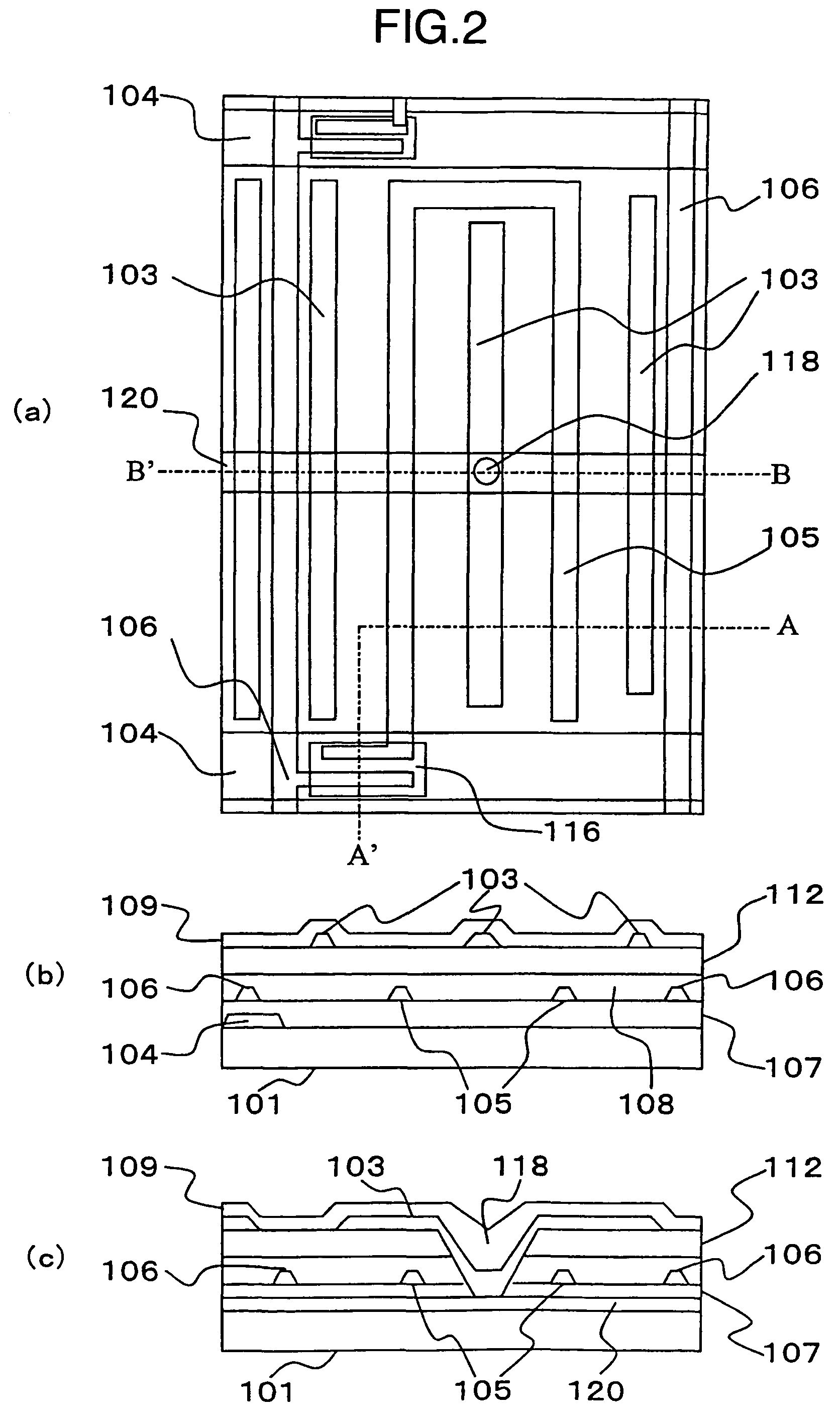Liquid crystal display
a liquid crystal display and liquid crystal technology, applied in the field of liquid crystal display, can solve the problems of insufficient reliability for commercial purposes, and insufficient heat and light resistance, and achieve the effects of reducing unsatisfactory display, stable liquid crystal alignment, and high contrast ratio
- Summary
- Abstract
- Description
- Claims
- Application Information
AI Technical Summary
Benefits of technology
Problems solved by technology
Method used
Image
Examples
example 1
[0156]EXAMPLE 1 corresponds to the first embodiment of the present invention, described above. It is described in detail by referring to FIGS. 1 and 2.
[0157]For production of the liquid crystal display of the first embodiment of the present invention, a glass substrate surface-polished to a thickness of 0.7 mm is used for the substrate 101 as the active matrix substrate and substrate 102 as the opposite substrate (color filter substrate).
[0158]The thin-film transistor to be formed on the glass substrate 101 is composed of the source electrode (pixel electrode) 105, drain electrode (signal electrode) 106, gate electrode (scanning electrode) 104 and semiconductor film (of amorphous silicon) 116.
[0159]All of the scanning electrode 104, common electrode interconnection 120, signal electrode 106 and pixel electrode 105 are produced by patterning a chromium film, where the pixel electrode 105 and common electrode 103 are set 7 μm apart from each other.
[0160]A chromium film, which is low i...
example 2
[0182]A liquid crystal display is produced in the same manner as in EXAMPLE 1, except that a liquid crystal alignment layer is provided on the substrate by printing a polyamic acid varnish composed of tetracarboxylic dianhydride (represented by the general formula [Compound 25]) as an acid dianhydride and 3,4-diaminothiophene (represented by the general formula [Compound 26]) as a diamine compound, and heated at 220° C. for 30 minutes for imidization to have an about 40 nm thick film. It is then treated for photo-alignment with polarized ultraviolet ray of KrF excimer laser beams (wavelength: 248 nm) and nitrogen laser beams (wavelength: 337 nm).
[0183]
[0184]
[0185]The nematic liquid crystal composition A is sealed in the display as in EXAMPLE 1, and annealed at 100° C. for 10 minutes. The liquid crystal molecules are well-aligned, essentially at a right angle to the polarized light irradiation direction.
[0186]The liquid crystal display panel has the liquid crystal layer having a thic...
example 3
[0194]A liquid crystal display is produced in the same manner as in EXAMPLE 1, except that a liquid crystal alignment layer is provided on the substrate by printing a polyamic acid varnish composed of 1,3-dimethyl-1,2,3,4-cyclobutanetetracarboxylic dianhydride (represented by the general formula [Compound 29]) and pyromellitic acid dianhydride (represented by the general formula [Compound 30]) as acid dianhydrides (molar ratio: 7 / 3) and p-phenylenediamine (represented by the general formula [Compound 31]) as a diamine compound to a thickness of about 50 nm.
[0195]
[0196]
[0197]
[0198]The liquid crystal display is evaluated for quality of the images it produces in a manner similar to that for EXAMPLE 1. The images are confirmed to be of high quality, having a contrast ratio of above 550 / 1, almost on a level with that of the display produced in EXAMPLE 1, over the entire display area. A wide viewing angle is also confirmed during the gradation display period.
[0199]The display is quantitat...
PUM
| Property | Measurement | Unit |
|---|---|---|
| light wavelength | aaaaa | aaaaa |
| thick | aaaaa | aaaaa |
| thick | aaaaa | aaaaa |
Abstract
Description
Claims
Application Information
 Login to View More
Login to View More - R&D
- Intellectual Property
- Life Sciences
- Materials
- Tech Scout
- Unparalleled Data Quality
- Higher Quality Content
- 60% Fewer Hallucinations
Browse by: Latest US Patents, China's latest patents, Technical Efficacy Thesaurus, Application Domain, Technology Topic, Popular Technical Reports.
© 2025 PatSnap. All rights reserved.Legal|Privacy policy|Modern Slavery Act Transparency Statement|Sitemap|About US| Contact US: help@patsnap.com



